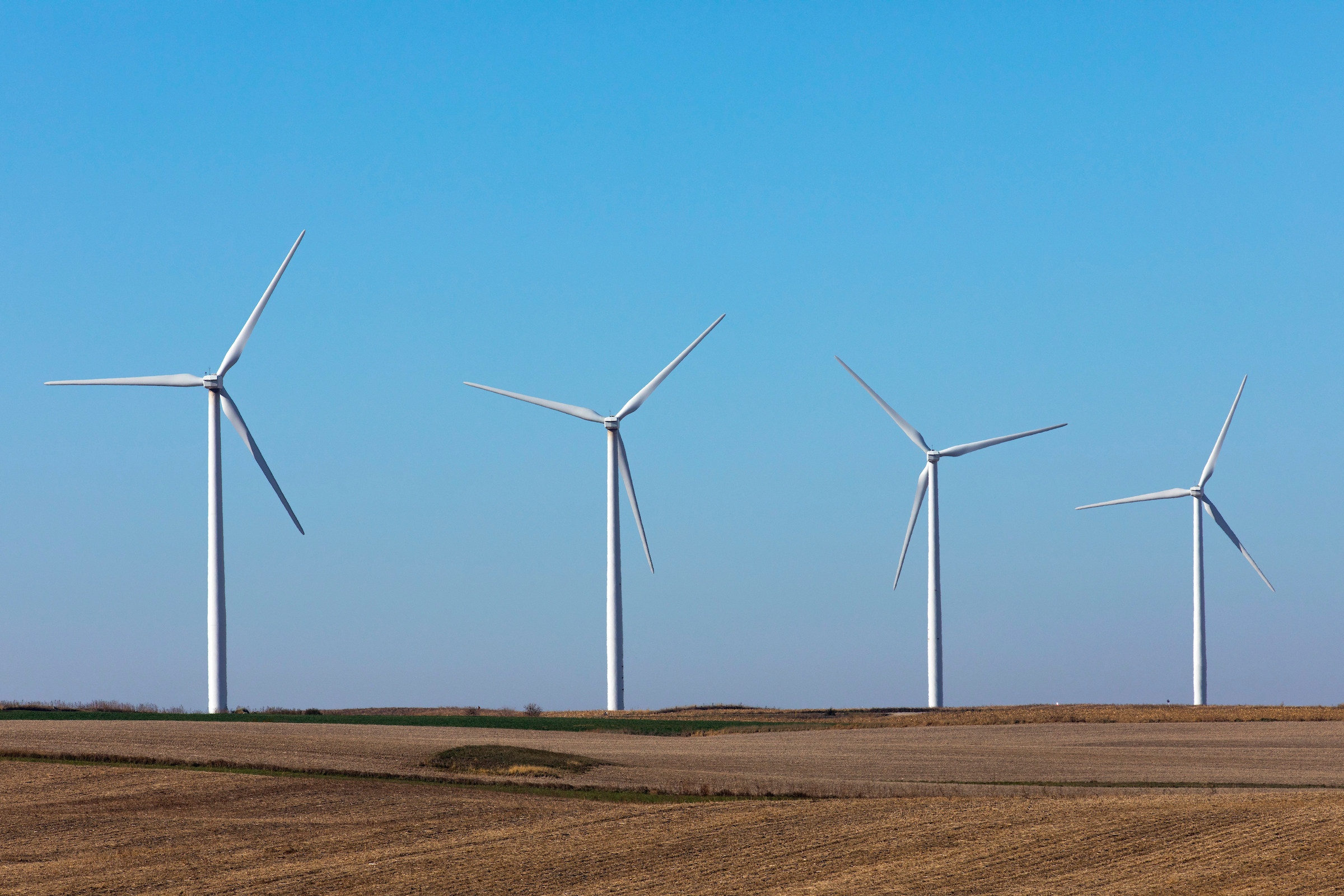
A turbine farm harvests electricity north of Ames this fall. An Iowa State engineer says new transmission lines that cross the country's major grids could be a boost to Iowa's wind-energy industry. Larger photo. Photo by Christopher Gannon.
AMES, Iowa – Countries around the world are well ahead of the United States in planning and building “macro grids” capable of moving electricity from one grid or distant geographic region to another, according to a new report authored by an Iowa State University engineer and a former doctoral student.
The report found, for example, that since 2014 China has built or planned 260 gigawatts of high-capacity interregional transmission, Europe 44 gigawatts, South America 22 gigawatts and India 12 gigawatts. Canada has developed or planned 4 gigawatts, and the U.S. 3 gigawatts.
“The United States is way, way behind,” said James McCalley, a report co-author, an Anson Marston Distinguished Professor in Engineering and the Jack London Chair in Power Systems Engineering at Iowa State. “That’s the key finding.”
McCalley authored the report with Qian Zhang, who earned a 2020 doctoral degree in electrical engineering from Iowa State. McCalley and Zhang have been part of a $1.5 million study supported by the U.S. Department of Energy that explored ways to connect the United States’ two major electric grids and share as much as 30,000 gigawatts of electricity across them.
The new, 78-page report – “Macro Grids in the Mainstream: An International Survey of Plans and Progress” – was sponsored and recently released by Americans for a Clean Energy Grid, a nonprofit group that advocates modernizing North America’s high-voltage electric grid. The report is part of a Macro Grid Initiative, an effort managed by the American Council on Renewable Energy and supported by businessman and philanthropist Bill Gates and Breakthrough Energy, a group he founded in 2015 that supports innovations leading to zero greenhouse gas emissions.
Benefits include moving wind and solar energy
What do all these countries get for their investments in electric transmission?
The report lists six major benefits of a macro grid: cost-reductions due to sharing of energy, services and capacity across regions; economic development; improved reliability; enhanced resilience and adaptability; higher use of renewable energy such as wind and solar; and lowered costs for reducing emissions.
The report also concludes, “The U.S. is in a position to obtain significant levels of all of these benefits via increased investment in interregional transmission.”
McCalley said Iowa in particular could benefit from building new links across the country’s eastern and western power grids. Those links would allow Iowa’s wind power to be shared across the West. Solar power from the sunny Southwest could also be used across the East.
“We’re arguably at or close to our wind-investment limit in Iowa as a result of transmission limits,” McCalley said. “We can’t build a whole lot more wind. The argument says that if you like wind-farm-related jobs, then build more wind farms. But then you need to build more transmission.”
Building public support is critical
Building large, new transmission projects requires public acceptance.
“It’s difficult to build infrastructure in back yards when people don’t think it’s beautiful,” McCalley said. “China can just do it. But in the U.S., building transmission is really hard. There’s hoop after hoop.”
The report says there are three characteristics to successful grid projects: An existing consensus to develop, available funding approaches and “public support (or at least a lack of public resistance).”
The report also notes promising developments on all three fronts: There’s growing understanding of the benefits of macro grids; the Federal Energy Regulatory Commission, regional transmission organizations and other groups have worked together on cost sharing; and public support can be built with strong national leadership, compensation to states perceiving fewer benefits, consolidation and coordination of the various siting and approval processes and use of underground transmission and existing right-of-way whenever possible.
All that is a source of some optimism for the report’s authors.
“Although the U.S. has built very little (interregional transmission),” McCalley and Zhang wrote, “developing these characteristics is definitely within reach.”
Contacts
James McCalley, Electrical and Computer Engineering, 515-294-4844, jdm@iastate.edu
Mike Krapfl, News Service, 515-294-4917, mkrapfl@iastate.edu
Quick look
Countries around the world are way ahead of the United States in building "macro grids" capable of moving electricity across grids or regions, according to a new report by an Iowa State engineer and a former doctoral student. The major benefits of macro grids include cost-reductions, economic development, improved reliability, enhanced adaptability, higher use of renewable energy such as wind power and lower costs for reducing emissions.
Quote
“Although the U.S. has built very little (interregional transmission), developing these characteristics is definitely within reach.”
James McCalley, distinguished professor, and Qian Zhang, former doctoral student